This series by American studies professor Ben Railton explores the connections between America’s past and present.
Many of American history’s most prolific and successful authors were women who have been almost entirely lost to our 21st century collective memories. America’s first two bestselling novels were written by such women, Susanna Rowson’s Charlotte Temple (1791) and Hannah Webster Foster’s The Coquette (1797). In the mid-19th century, Harriet Beecher Stowe’s Uncle Tom’s Cabin (1852) was rivaled in sales by works from popular and prolific authors such as Susan Bogert Warner (whose 1850 book The Wide, Wide World kept pace with Stowe’s) and Maria Susanna Cummins (whose 1854 novel The Lamplighter did the same). And later in the century, no American authors were more widely read nor published across a wider range of genres than Rebecca Harding Davis and Elizabeth Stuart Phelps Ward. Yet these writers and their bestsellers rarely even appear in college literature courses, and have no presence in our wider cultural conversations.
There are lots of factors in the disappearance of each one of these authors, many connected of course to sexism. Well known writer Edith Wharton was born on this day in 1862, so it seems a fitting time to recover, remember, and read these lesser celebrated writers and their works. A forthcoming book promises to offer us that opportunity for one of early 20th century America’s most prolific, influential, and frustratingly forgotten authors, and one with a deep connection to the Saturday Evening Post: Carolyn Wells (1862-1942), who was born the same year as Wharton.
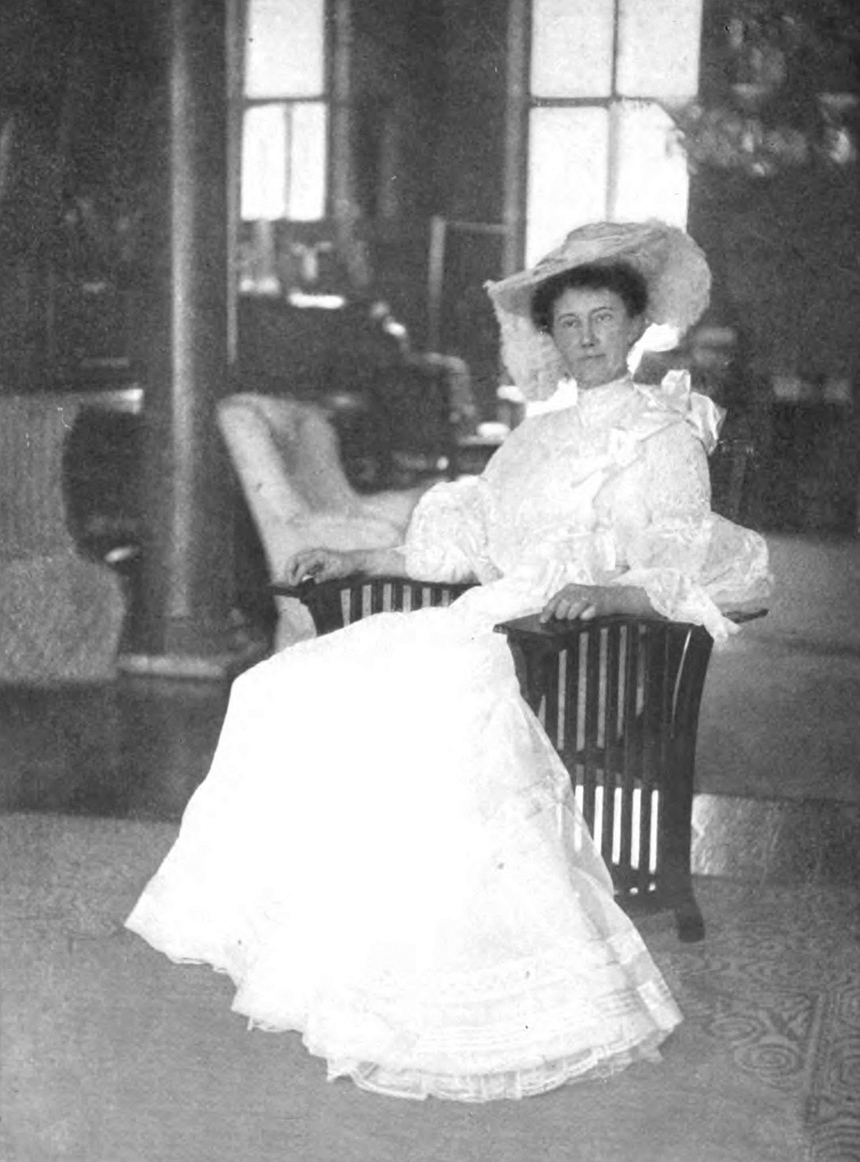
Due out in February from Post Hill Press, Rebecca Rego Barry’s The Vanishing of Carolyn Wells: Investigations into a Forgotten Mystery Author will be the first full-length biography of Wells. I’ve had the chance to read an advance copy of Barry’s book, and it’s both an engrossing journey into Wells’s life and work and a thoughtful examination of why and how bestselling writers like Wells can vanish from our memories. Here I’ll highlight a handful of the compelling stages of Wells’ multipart and hugely successful career.
A Literary Librarian
In the 1890s, while working as a librarian in her hometown of Rahway, New Jersey, Wells began writing and publishing collections of poems, stories, and puzzles, many aimed at young audiences and all featuring elaborate wordplay. From her 1896 debut At the Sign of the Sphinx to her 1900 collection Idle Idyls, these first few books were immediate hits and built a literary reputation for Wells, fame that was sufficient to earn her an invitation to present an original poem at Mark Twain’s 70th birthday party in New York City in December 1905. Her witty “Rhymes Written upon the Occasion of Mark Twain’s Passing His Seventieth Smilestone” was, natch, a hit.
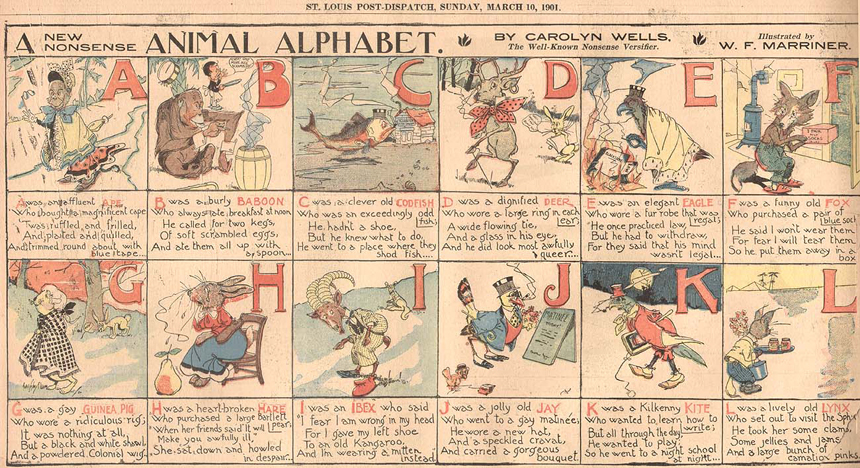
Poet for the The Saturday Evening Post
By 1905, Wells had already also begun to publish her poems, puzzles, and prose in periodicals, often accompanying illustrations by the era’s most famous artists. This stage of Wells’s career began with the delightful Animal Alphabet, which appeared in the New York World in March 1901 and featured illustrations by William F. Marriner. One of Wells’s most consistent venues for these periodical publications was The Saturday Evening Post, where she published numerous poems and short works between 1900 and 1930. An excellent early example of Wells’s Post poems is the witty and semi-autobiographical “Ballade of the Girl from Jersey City,” which appeared in the April 18, 1903, edition.
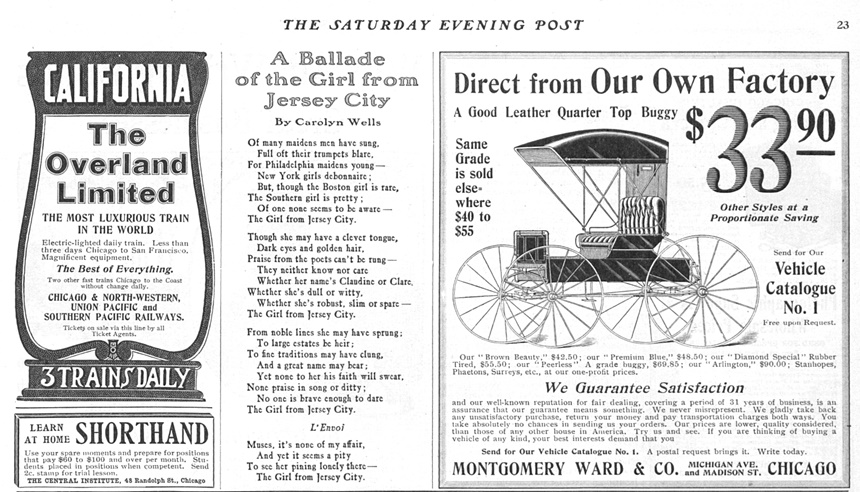
Young Adult Author
Wells was never content to publish in just one setting nor one literary genre, however, and across those same early 20th century decades she likewise became one of America’s most prolific and popular authors of young adult fiction. That stage of her career began with Patty Fairfield (1901), the first of 17 novels published between 1901 and 1919 about this youthful heroine. During these years Wells also published six novels about Marjorie Maynard, two about the Dorrance family, and three about Two Little Women, along with a handful of standalone books including one of her biggest bestsellers, The Story of Betty (1909). Reaching a far different audience from her work for the Post, Wells’s bestselling young adult books rivaled contemporary classics like Lucy Maud Montgomery’s Anne of Green Gables (1908).
Matriarch of American Mysteries
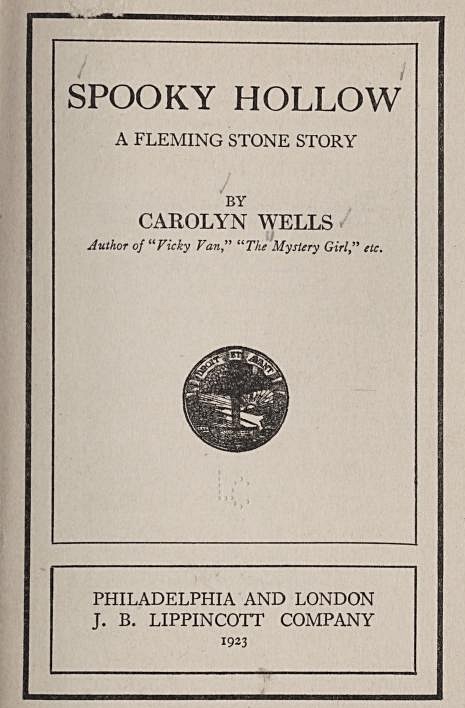
All of those publications would have been more than enough to cement Wells’s reputation, but it was in another genre that she would achieve her most significant influence. Wells had been a fan of mystery novels since reading Anna Katharine Green’s That Affair Next Door (1897), and between 1909 and her death in 1942 she published 82 mystery novels of her own, for an average of nearly three books a year! Sixty-one of those novels featured the detective Fleming Stone; this groundbreaking series of locked-room and puzzle mysteries, which began with 1909’s The Clue and concluded with 1942’s Who Killed Caldwell?, greatly influenced later authors including Agatha Christie. Moreover, Wells saw herself as an advocate for her fellow authors in this emerging genre, and her two Best American Mystery Stories of the Year anthologies, published in 1931 and 1932, went a long way toward helping grow that community’s audience.
Library of Congress Legacy
When Wells passed away in 1942, her own prominent place in the literary community seemed secure. I’ll leave it to Barry’s excellent book to trace how and why Wells vanished from our memories, and end here with one final way that Wells left her own important cultural legacy. Through both her own collecting and her marriage to Hadwin Houghton (part of the family who founded the Houghton-Mifflin publishing company), Wells amassed a sizable collection of rare books, including a particularly impressive selection of first and rare editions of Walt Whitman’s poetry. When Wells died, she left that collection to the Library of Congress, where the Carolyn Wells Houghton Whitman Collection remains one of the most important archives of this pioneering figure’s works.
Just as Carolyn Wells helped support the works and preserve the memories of Whitman as well of so many of her contemporary authors, it’s long past time we did the same for Wells. Barry’s forthcoming book represents an excellent start.
Become a Saturday Evening Post member and enjoy unlimited access. Subscribe now
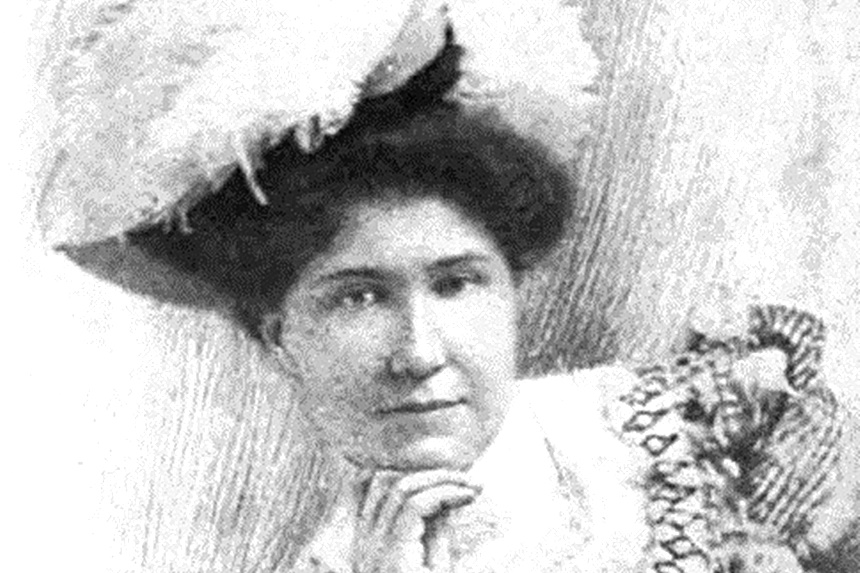



Comments
Thanks so much, Bob! I don’t think I ever shared here a blog where I paid tribute to you for all your thoughtful comments, but I’ll do so now:
https://americanstudier.blogspot.com/2023/01/january-14-15-2023-five-years-of.html
Very much appreciated!
Ben
Thank you Ben for this feature on these very talented women writers who absolutely shouldn’t be overlooked, dismissed, much less forgotten. I want to read their stories, in their own unique styles. Carolyn Wells and the other writers you listed with links in the first paragraph. Very thoughtful and much appreciated.
Since the 21st century is becoming more like the the 19th (in its worst aspects) all the time, what these wise and talented women of that time have to say will better help us understand these times even though that may not seem logical at first. This is definitely in the tradition of the wonderful one you wrote on Fanny Fern several years ago.